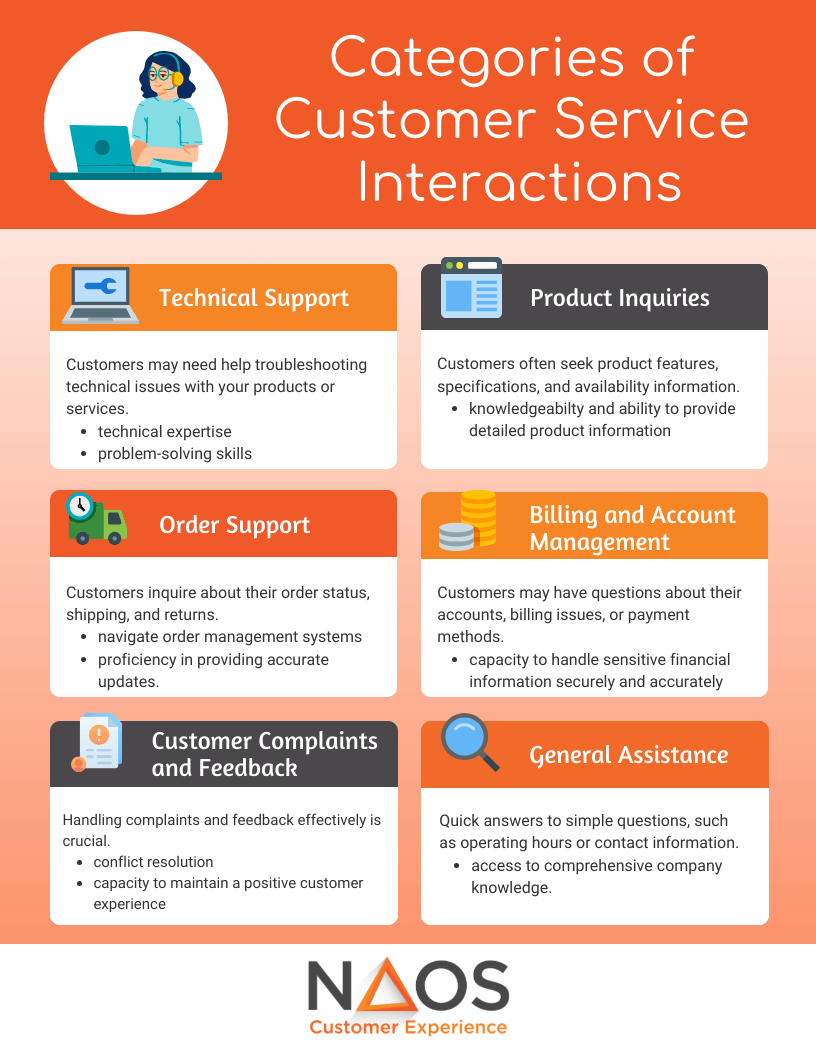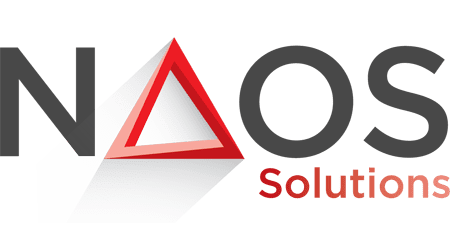It is not easy to hire a call center that truly elevates customer service. Poorly executed Customer service results in a 14% increase in customer churn, a loss no business can afford. Plus, it costs five times more to attract a new customer than to keep an existing one, so it may be in your best interest to up your customer service game.
As a startup, that may have been simple. However, maintaining in-house top-tier customer service gets trickier as a business grows and customer interactions multiply. This is where call center outsourcing comes in.

Outsourcing your customer service operations can be a game-changer, providing access to experienced professionals and 24/7 support. The key is choosing the right call center that aligns with your brand values and understands your customer base.
In this guide, you’ll learn the steps and criteria for making an informed decision.
STEP 1: UNDERSTANDING YOUR NEEDS
The most crucial step before hiring a call center is self-reflection: What is your current customer service landscape? Here’s how to dive deeply into the specifics shaping your outsourcing strategy.
Assessing Your Customer Service Requirements
First, crunch the numbers: how many calls are you receiving daily, weekly, and monthly? Not just an average, but peak times too. Are you a seasonal business with predictable spikes?

To estimate call volumes accurately, follow these steps:
- Gather and analyze Historical: Review call logs and customer interaction records from the past 12 months to identify patterns and trends.
- Identify peak periods: Note the days, weeks, and months with the highest call volumes. Consider factors such as holidays, sales events, and product launches.
- Adjust for Marketing Activities: Consider upcoming marketing campaigns, product releases, and other activities that may influence call volumes.
- Consider customer feedback and surveys: Use customer feedback and surveys to gain insights into peak contact times and service expectations.
- Use Advanced Analytics Tools: If possible, implement analytics tools that provide real-time data on call volumes and trends. These tools can offer predictive insights based on historical data.
The key here is to come up with accurate numbers, not estimates. Underestimating call volume leads to frustrated customers, while overestimating will drain your budget.
Equally importantly, determine the types of customer inquiries you’re receiving. Categorize interactions to understand better your customer needs:
- Technical Support: Customers may need help troubleshooting technical issues with your products or services. This requires agents with technical expertise and problem-solving skills.
- Product Inquiries: Customers often seek product features, specifications, and availability information. Agents should be knowledgeable and able to provide detailed product information.
- Order Support: Customers inquire about their order status, shipping, and returns. Agents should be proficient in navigating order management systems and providing accurate updates.
- Billing and Account Management: Customers may have questions about their accounts, billing issues, or payment methods. Agents need to handle sensitive financial information securely and accurately.
- Customer Complaints and Feedback: Handling complaints and feedback effectively is crucial. Agents should be trained in conflict resolution and maintaining a positive customer experience.
- General Assistance: Quick answers to simple questions, such as operating hours or contact information, require agents to have access to comprehensive company knowledge.
These details will bring you closer to a call center specializing in your customer base.

Setting Clear Objectives
Defining goals and objectives is insufficient to say “better customer service.” Do you want to cut average wait times by 20% or boost your Net Promoter Score by 10 points?
Define what victory looks like to your business by accurately measuring an ideal call center’s impact. This is where the power of SMART goals comes into play. Your objectives must be Specific, Measurable, Achievable, Relevant, and Time-Bound.
Examples of concrete objectives:
- Wait Time Reduction: Aim to decrease average wait times from 120 seconds to 60 seconds within six months, enhancing customer satisfaction.
- NPS Improvement: Increase the Net Promoter Score from 50 to 60 points within one year by improving the quality of customer interactions.
- First Call Resolution (FCR): Enhance the FCR rate from 70% to 85% within the next quarter, reducing the need for follow-up calls.
- Customer Satisfaction (CSAT): Boost CSAT scores from 80% to 90% within the next six months by implementing more efficient problem-solving processes.
Every company has unique views and requirements concerning customer service Service Level Agreements (SLA). An SLA is a formal consensus that outlines the expected performance standards and service levels between you and your call center provider.

Fundamental principles of an SLA include:
- Performance Metrics: Define clear KPIs such as average response time, resolution time, and customer satisfaction scores. For example, an SLA might state that 90% of calls must be answered within 30 seconds.
- Accountability: Specify the responsibilities of both parties to ensure mutual accountability. For example, the call center may be required to provide monthly performance reports.
- Quality Assurance: Establish standards and regular monitoring to maintain high service levels. For example, an SLA might require daily quality checks on 50 calls taken randomly with a minimum satisfaction score of 85%.
- Scalability: Include provisions for adjusting service levels based on business needs. For example, the call center should be able to handle an unexpected 20% increase in calls at any time.
- Dispute Resolution: Outline procedures for addressing any service issues or breaches of the agreement. For example, there should be a defined process for escalating unresolved issues to higher management.
For more detailed information, please refer to our previous article defining the right outsourcing SLA.
SLAs and objectives work together to create a comprehensive strategy for managing your outsourced call center. SLAs set the performance standards the call center must meet, while SMART objectives define the specific goals you want to achieve.
For example:
- Objective: Reduce average customer wait time to under 45 seconds within six months.
- SLA: 90% of calls must be answered within 30 seconds.
In this case, the SLA ensures that calls are answered promptly, reducing overall wait times.
Ensuring that your SLAs align with your business objectives enables you to monitor performance and make data-driven decisions to improve customer service.
Budget Considerations To Hire A Call Center
Let’s be honest: outsourcing can be a hefty investment in time and energy. But did you know that businesses typically save 30% on operating costs by doing so?
Transforming Fixed Costs into Variable Costs
One of the leading financial advantages of outsourcing is transforming fixed costs into variable costs. Here’s how it works and its positive consequences:
- Reduced Overhead: By outsourcing your call center operations, you eliminate the need for substantial upfront investments in infrastructure, equipment, and technology. The outsourcing provider handles these costs, allowing you to pay only for the services you use.
- Scalability: Outsourcing offers flexibility to scale your operations up or down based on demand. During peak seasons or promotional campaigns, you can increase capacity without incurring the fixed costs of hiring and training new staff or expanding facilities. Conversely, you can reduce costs during off-peak periods.
- Predictable Expenses: Outsourcing converts unpredictable and potentially fluctuating expenses into predictable monthly payments. This consistency makes budgeting easier and financial planning more accurate.
- Access to Expertise: Outsourcing grants access to a pool of experienced professionals without the costs associated with recruiting, training, and retaining in-house staff. This expertise often leads to better performance and customer satisfaction, further enhancing your return on investment.

Setting a Realistic Budget
Setting a realistic budget is crucial to maximize the benefits of outsourcing. Here’s how to approach it:
- Assess Current Costs: Evaluate your customer service costs, including salaries, benefits, training, infrastructure, technology, and management. This gives you a baseline for comparison.
- Identify Potential Savings: Estimate potential savings from outsourcing. Consider the reduced fixed costs and the benefits of improved efficiency and scalability.
- Compare Providers: Obtain quotes from multiple call center outsourcing companies. Ensure you compare the cost and services included, such as technology, training, quality assurance, and reporting.
- Balance Cost and Quality: Remember, the cheapest option is not always the best. Consider the quality of service provided and how well the provider aligns with your business needs and values. High-quality service can improve customer satisfaction, retention, and overall business growth.
By transforming fixed costs into variable costs and leveraging the expertise of outsourcing providers, companies can achieve significant cost savings and operational efficiencies, ultimately leading to improved financial performance and business growth.
STEP 2: KEY FACTORS TO CONSIDER WHEN HIRING A CALL CENTER
Choosing the right call center requires the same effort as selecting a business partner. It’s a relationship that demands trust, compatibility, and a shared vision for customer success. Keep these critical factors in mind during your decision-making process:
Experience and Expertise
The right call center partner will be more than just a friendly voice on the other end of the line. They should be well-versed in your industry’s nuances, terminology, and typical customer pain points.
Customer service reps with industry-specific knowledge experience faster resolutions, fewer escalations, and, ultimately, happier customers. For instance, a call center specializing in healthcare should be well-versed in HIPAA regulations and insurance claims.

Technology and Infrastructure
Call centers are no longer just a collection of phones and headsets. Look for partners that have access to cutting-edge technology like:
- Automatic Call Distribution (ACD) for efficient routing
- Interactive Voice Response (IVR) for self-service options
- Robust CRM integration for seamless customer data management.
Omnichannel capabilities are also crucial as they allow you to meet customers on their preferred platforms: phone, email, live chat, or social media. Companies with robust omnichannel strategies retain at least 89% of their customers.
Scalability and Flexibility
Your call center partner should be able to scale their services up or down according to your business needs. Seasonal fluctuations, marketing campaigns, and unexpected events can all impact call volume.
Hire a call center offering flexible service packages that can easily adjust staffing levels to accommodate any ups and downs.
Quality of Service
Excellent customer service is non-negotiable.
When evaluating potential call center partners, it is essential to thoroughly examine their training programs, quality assurance practices, and performance monitoring tools.
- Training Programs
Investigate the comprehensiveness of the training programs. This includes initial training, ongoing education, and specialized training for handling complex issues. Look for evidence of a structured approach incorporating technical and soft skills development.
- Quality Assurance Practices
Quality assurance should be a cornerstone of any reputable call center. Ask about their quality assurance frameworks, including the frequency of call monitoring, the criteria for evaluating agent performance, and how feedback is provided and implemented.
Certifications such as ISO 9001 indicate a robust commitment to quality management standards and continuous improvement. Additionally, look for certifications specific to customer service, such as ISO 18295-1:2017 and ISO 18295-2:2017, tailored explicitly to customer contact centers.
- Performance Monitoring Tools
Advanced performance monitoring tools are critical for maintaining high service levels. Ensure the call center uses sophisticated analytics and reporting tools to track and optimize key metrics.
Key Metrics to Gauge a Customer Support’s Quality of Service:
Review the call center’s performance on existing campaigns for clients in similar industries to gauge their capability and fit for your specific requirements.
- First Call Resolution (FCR): A high FCR rate signifies that issues are resolved during the first interaction, reducing the need for follow-up calls. This metric impacts customer satisfaction and operational efficiency by minimizing repeat contacts.
- Customer Satisfaction (CSAT): Regularly measuring CSAT scores helps gauge customers’ immediate reaction to their service experiences. High CSAT scores indicate a service that meets or exceeds customer expectations.
- Net Promoter Score (NPS): NPS provides insights into customer loyalty and the likelihood of customers recommending your services. It’s a strategic metric that reflects overall customer sentiment and long-term satisfaction.
- Average Handle Time (AHT): While AHT can vary greatly depending on the industry, the complexity of interactions, and the regions served, it’s crucial to balance efficiency with thoroughness. Typical AHT benchmarks can range from 4 to 10 minutes, but the specific context of your business and customer needs will define the ideal range.
Partnering with a call center that excels in these areas ensures high-quality customer interactions and alignment with your strategic goals for customer service excellence. Understanding and leveraging these quality indicators allows you to make informed decisions that drive customer satisfaction and operational efficiency.
Cultural Fit and Communication
Your call center agents will be your brand’s voice. Partnering with a company that aligns with your values, culture, and communication style is crucial. Language proficiency, accent compatibility, and cultural sensitivities significantly affect customer satisfaction.
It may not seem important, but cultural mismatch significantly contributes to misunderstandings, misinterpretations, and dissatisfied customers.
STEP 3: HIRE THE CALL CENTER
Once you clearly understand your needs, it’s time to hire a call center that meets all these criteria.
Research and Shortlist Potential Call Centers
Begin your search using a variety of sources to get a comprehensive view of potential call centers:
- Industry Directories: Start with industry directories such as Clutch, G2, and Capterra, which provide reviews and ratings from other businesses. These platforms offer insights into other clients’ experiences and the performance of call centers in various sectors.
- Internet Research: Utilize search engines and social media platforms to discover additional call centers. Look for customer reviews, case studies, testimonials on their websites, and third-party reviews. This broader research helps you identify potential partners beyond those in industry directories.
- Word-of-Mouth Recommendations: Don’t underestimate the power of personal recommendations. Contact colleagues, industry peers, or even your existing customers for referrals. Personal experiences often provide valuable insights into the call center’s performance and reliability.
- Industry Events and Conferences: Attend industry events and conferences to network with potential partners and learn more about their offerings firsthand. These events can also provide opportunities to meet with representatives from small to medium call centers that may not be as widely known but offer excellent services.
Consider independent or small to medium call centers. These providers often offer distinct advantages over larger call centers:
- Personalized Service: Smaller call centers can provide more personalized service and attention to your needs.
- Flexibility and Agility: They are often more flexible and able to adapt quickly to changes in your business requirements.
- Cost-Effective Solutions: Smaller call centers may offer competitive pricing without compromising on quality, making them a cost-effective option.
- Specialized Expertise: Many independent call centers specialize in niche markets or industries, offering deep expertise and tailored solutions.
The RFP Process Before Hiring a Call Center
The Request for Proposal (RFP) process lets you clearly and comprehensively define your expectations. A well-crafted RFP helps ensure that potential call center partners understand your needs and can provide suitable solutions.
Here are the key elements to include:
#1 Company Overview: Provide a brief description of your company, including industry, size, and customer base. This context helps call centers tailor their proposals to your specific needs.
#2 Scope of Services: Clearly outline the services you require. This might include inbound and outbound calls, technical support, customer service, sales, etc.
#3 Call Volume Projections: State your projected call volumes, including daily, weekly, and monthly estimates. Highlight peak times and seasonal fluctuations to ensure the call center can manage your demand effectively.
#4 Customer Demographics: Share information about your customer base, including key demographics and typical customer profiles. This helps the call center understand who they will be interacting with.
#5 Technology Preferences: Specify any preferred technologies or systems you currently use or plan to use. Ensure the call center can integrate with your CRM, helpdesk software, and other critical systems.
#6 Performance Metrics: Define the key performance indicators (KPIs) you will use to measure success, such as First Call Resolution (FCR) rates, Customer Satisfaction (CSAT) scores, Average Handle Time (AHT), and Net Promoter Score (NPS).
#7 Training Programs: Inquire about the call center’s training programs, including how they onboard new agents, ongoing training initiatives, and any specialized training for handling specific issues or products.
#8 Quality Assurance Measures: Ask about their quality assurance processes, including how often calls are monitored, the evaluation criteria, and how feedback is provided to agents.
#9 Disaster Recovery Plans: Ensure the call center has robust disaster recovery and business continuity plans. These plans are crucial for maintaining service during unexpected events.
#10 Cultural Fit: Discuss the call center’s approach to ensuring cultural alignment with your brand values and communication style. This includes language proficiency, accent compatibility, and cultural sensitivities.
Conducting Interviews and Site Visits
This is an unskippable step—interviews and site visits offer insights that no RFP can provide. You can learn more about the company’s culture, employee engagement strategies, and customer interaction approaches during interviews.
Plus, site visits allow you to witness their operations firsthand. How do their agents interact with customers? What’s their technological infrastructure like? Is the overall atmosphere of the call center positive? Make sure you have all the answers before you leave.
Negotiating Terms and Contracts
Once you’ve narrowed your choice, it’s time to hire a call center.
Don’t skim over the fine print, especially service level agreements (SLAs), when reading the contract details. SLAs define performance expectations, such as average wait times, call abandonment rates, and customer satisfaction targets.
Discuss pricing models – call centers may charge per minute, per call, or a per-seat structure. Most importantly, ensure the contract includes clauses for scalability so they can adjust service levels as your business grows.

STEP 4: IMPLEMENTING AND MANAGING THE PARTNERSHIP
Finally, it’s time to nurture this contract into a thriving, mutually beneficial partnership that delivers top-notch customer service.
Onboarding and Training
Onboarding the call center is a crash course in your brand identity, product offerings, and customer service philosophy. With the proper onboarding flow, you can guarantee that your outsourced call center team becomes an extension of your in-house team.
Companies with a strong onboarding flow improve new hire retention by 82% and productivity by 70%. They’ll speak your language, understand your values, and embody your brand voice.
Monitoring and Evaluating Performance
Don’t just hope for the best; measure it. Track KPIs like average handle time, first-call resolution rates, customer satisfaction scores, and call abandonment rates. Conduct regular performance reviews and provide constructive feedback.
For instance, if you notice a spike in call abandonment rates, find out the root cause. Is it due to long wait times, technical issues, or agent performance? This will help you identify areas for improvement.
Continuous Improvement
Customer service strategies are an ongoing journey, not a one-time effort. Encourage a culture of continuous growth improvement within your outsourced call center team. You can do so with the help of regular feedback via surveys, focus groups, and social media monitoring tools.
CONCLUSION
The right call center is an investment in your customer success strategy. It’s the difference between satisfied customers returning for more and disgruntled ones taking their business elsewhere.
With the right call center partner, exceptional customer service can become a reality for your business. Contact NAOS Solutions for expert advice and support on making the right choice.

